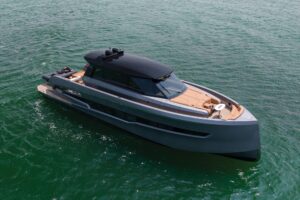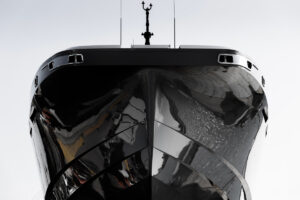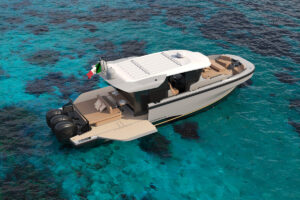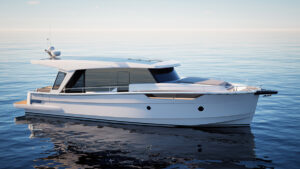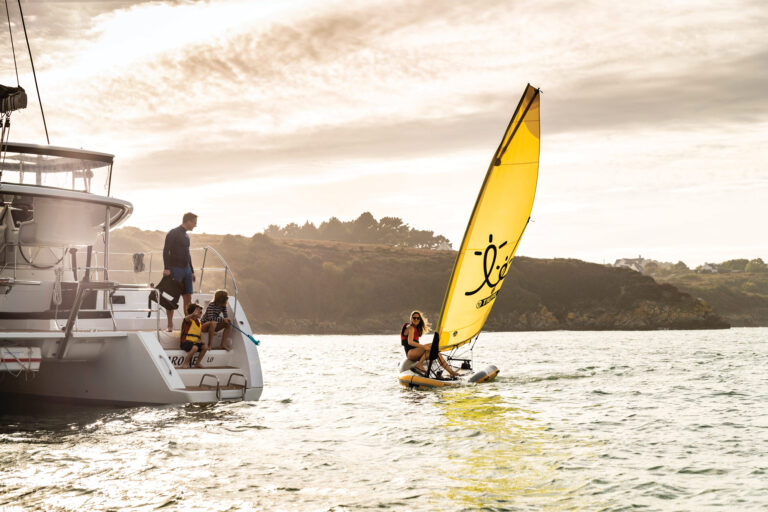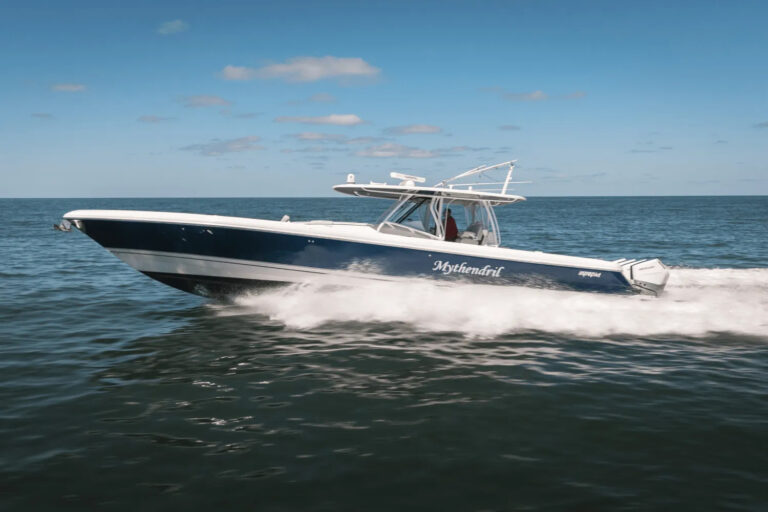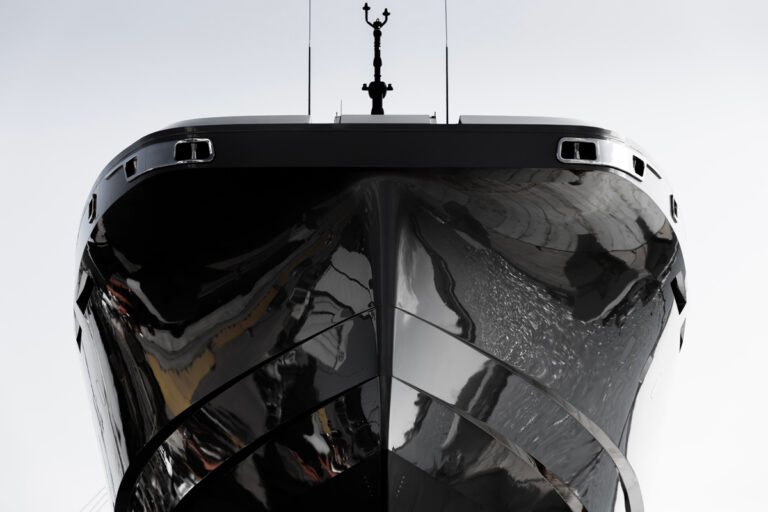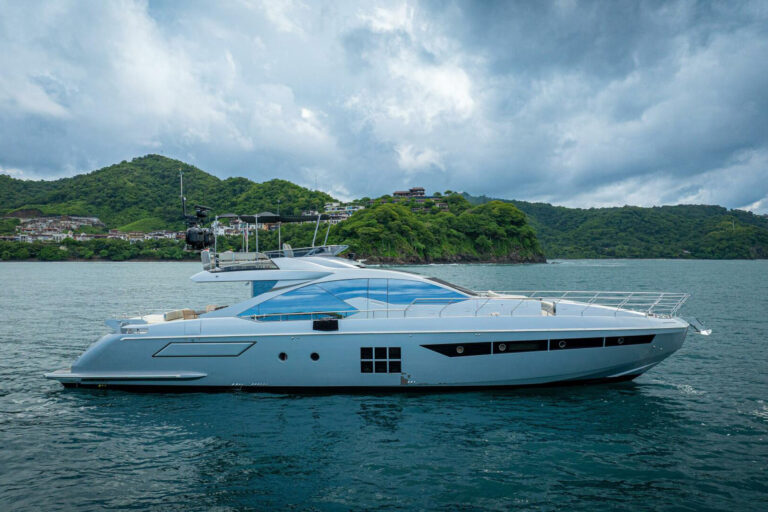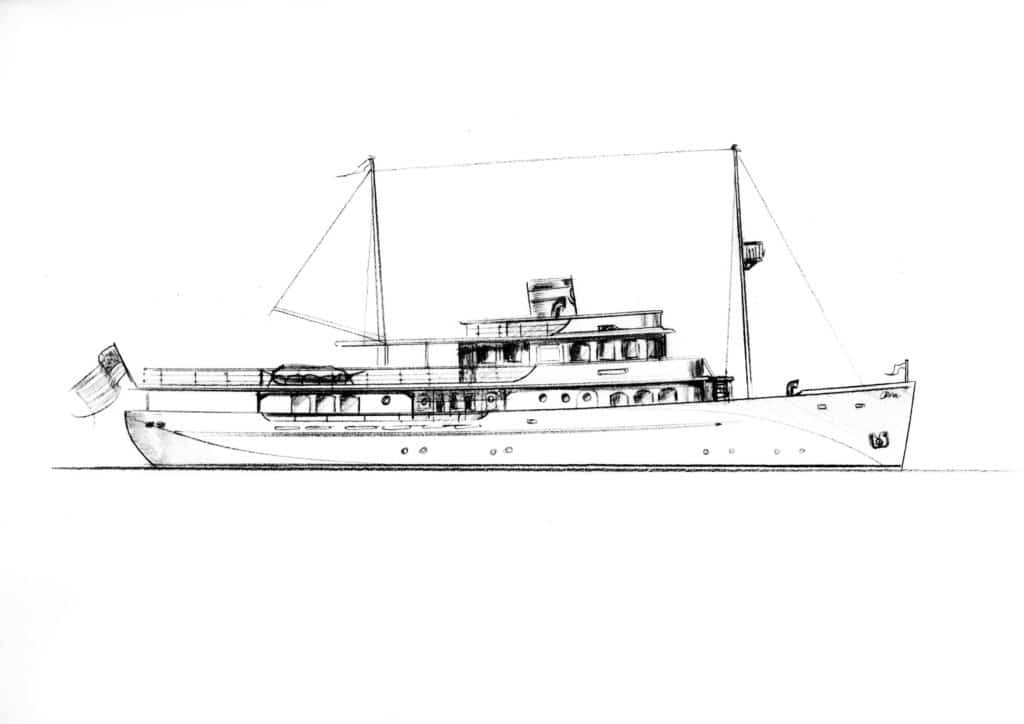
It started innocently enough, with a call to action reminiscent of the Mission Impossible series. During a press tour of shipyards in the Netherlands, I returned to my hotel room one evening to find a tablet PC sitting on the desk. A note read, “Play Me.”
Being good at following directions, naturally I complied. A video invitation opened from the design studio Vripack. I could choose among a handful of experiences that the team would make happen, including working with them to design my own yacht. As Marnix Hoekstra, the firm’s co-creative director, put it, the Vripack team wanted to “seriously spice up” my bucket list. Bart Bouwhuis, Hoekstra’s fellow creative director, helpfully added, “And the tablet won’t self-destruct after playing the video.”
After 23 years of covering yachts, I’m jaded sometimes. This was not one of those times. In fact, I was practically (OK, full-on) giddy. Questions blasted rapid-fire through my mind. How fascinating would it be to step into the shoes of a mega-yacht owner at the advent of the commissioning process, a stage so few of us ever get to see? Is this the heart flutter that owners feel when they’re about to work with a top designer? What kind of yacht would I want? What would it look like? How big would it be? And is there any such thing as too many questions?

Before you reach out to your favorite design firm, gather your thoughts. The first question the Vripack team asked me is likely the first one a designer will ask you: “How do you like to live?” It’s an open-ended question that sums up several others. Are you a barefoot-casual kind of person, or do you enjoy an air of formality? Do you like traveling with lots of family and friends, or do you seek intimate private time? Will your yacht be for private use, or will you charter her? Is globe-trotting high on your list, or do the Caribbean and Med suffice? By better understanding your personality, the design team can manifest your preferences into the general arrangement.
Surely you already prefer certain profile elements, even complete styles. Pull together pictures that best represent them (see “Rip, Clip and Save,” this story). I’m a sucker for Trumpys and early 20th-century yachts, plus turn-of-the-century furniture. I find a kindred spirit at Vripack in Pim Dijksman, who shares my weak spot for “golden oldies,” as he puts it.
It doesn’t take him long to start sketching by hand what the Vripack team nicknames my Classic Enjoyer — or for Bouwhuis to join in. Funny enough, Bouwhuis, who with Hoekstra is often the face of the company, had planned mostly to observe the staff’s interactions during my visit. But he just can’t help himself, by his own admission, when I mention my penchant for classics.
I feel like I’m watching a tennis match while the two of them work.“How about sliding windows in the wheelhouse?” Dijksman asks at one point, raising his head from his pencil and paper.
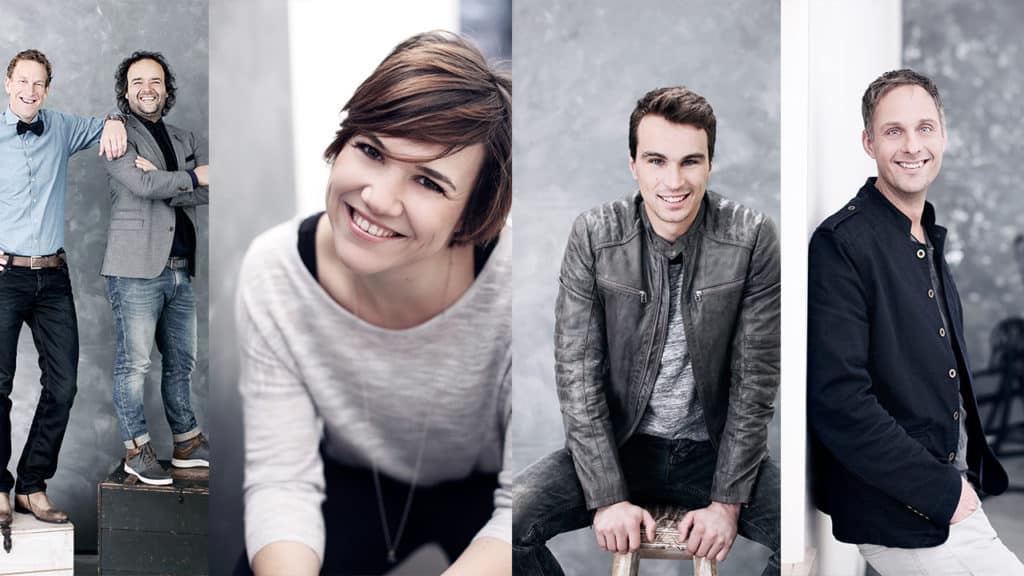
“Yes! Yes!” Bouwhuis replies. “With leather grips too!” Their excitement is real, and it makes me even more excited to see their interpretation of my desires. By the end of the first day, my Classic Enjoyer has a nearly complete preliminary G.A. — remarkable, considering the process typically takes weeks. Even the Vripack team was surprised at how quickly things came together. “If you give a design team a hard problem together with unlimited resources, they’ll most likely take the route to the solution they know,” Hoekstra says. “They’ll spend a lot of time and money in a vain effort to avoid failure. It’s basic human nature. But when you ask the same design team to deliver 10 times the performance with seriously limited resources, like a tenth of the budget or time, it forces invention and drives innovation.”
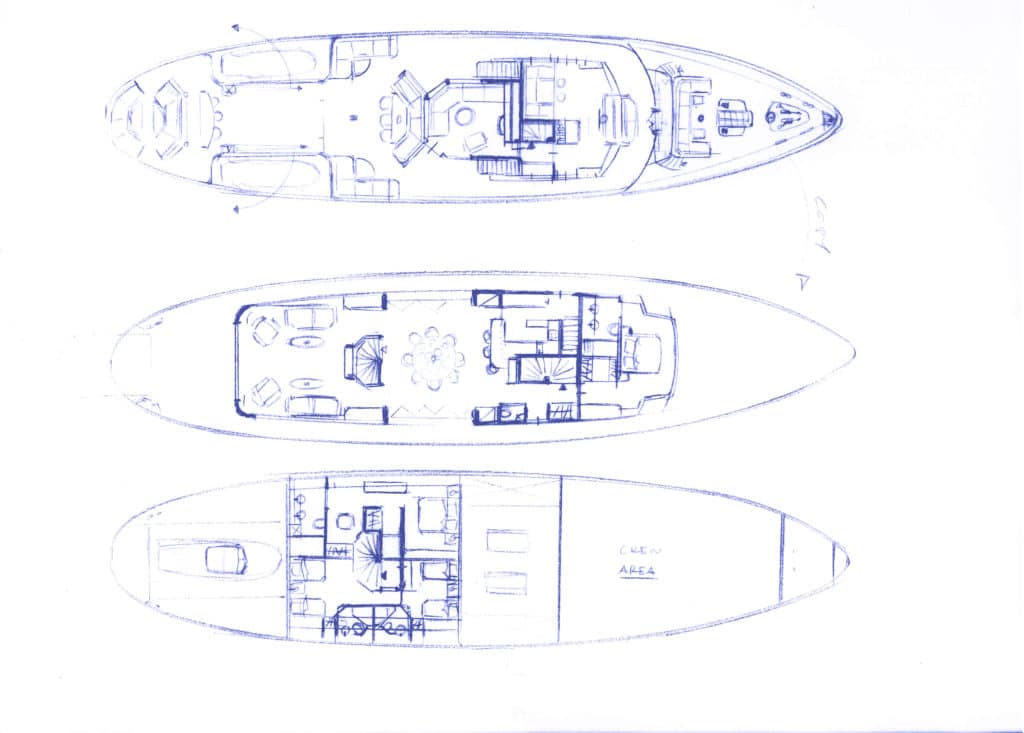
Invention came into play in another way before the sketching even started. Most buyers have a set length overall in mind. I, on the other hand, didn’t. In fact, I knew more about what I didn’t want than what I did when it came to dimensions: I didn’t want to exceed 150 feet; I didn’t want more than eight guests; and I didn’t want to go over 500 gross tons. I essentially threw down the gauntlet for Jeroen Droogsma, my appointed Vripack project manager, and Albert Abma, one of the firm’s naval architects. It’s their task to begin outlining the design brief via the LOA, passenger capacity, speed expectations and other specs. Absent a length, they work based on the best function within the classic-yacht envelope. (Classic yachts perform better at displacement speeds.)
While this “form-follows-function” principle is renowned, yacht buyers don’t typically approach a new build from that perspective. Based on my experience, perhaps more should. Abma excuses himself to do calculations while I sit with Dijksman — and within about an hour, Abma returns with a 138-foot LOA, rough space allocation, an expected 14-knot top speed and a 4,000-nautical-mile range cruising at 10 knots.
Two intense days, as much for Vripack as for me, lead to my Classic Enjoyer taking shape. She’s still a preliminary design — I’d need to work with a yard and Vripack together to ensure every aspect would work — but there’s a beautiful hand sketch of her sitting on my bookshelf. I see it every day when I enter my office. And I can’t stop smiling.

Length Isn’t That Important
To be clear, your yacht’s final length overall is important — it’s just not the most important thing. Think about all the times you’ve read about a custom yacht that started out one size and ended up growing before the first fiberglass was laid into the mold or first piece of metal was cut for the hull plates. The size change is not always because the owner decided the master suite needed to be bigger. Rather, length overall can grow from a variety of things. Sometimes the initial envisioned length of the vessel isn’t practical for all of the necessary and/or desired equipment, or for the comfort of the crew needed to operate the yacht. These kinds of discoveries get made in the course of the conversations you’ll have with your yacht’s designer.
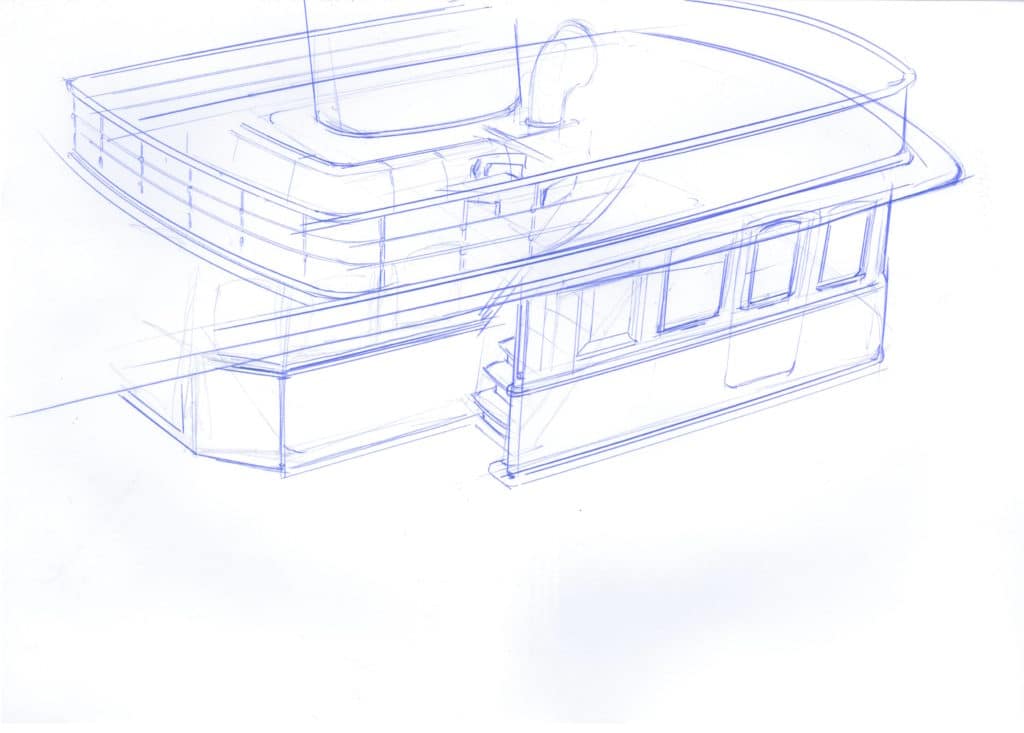
Rip, Clip and Save
Don’t just tell the design team what you would like in your yacht: Show them. Find photos online and in magazines that exemplify the details you like best. Organize them in physical folders or ones on your computer that you can email to the team. Do the same thing for the yacht’s interior, collecting images that reveal intimate or expansive room arrangements, furniture styles, tones, fabrics and textures that you would like to see incorporated. It’s better to show the designers what you mean by “modern-day magenta” than for them to try to decipher your code.

In the Mood
Designers often create mood boards before they draw the first line for a yacht. Mood boards are collages of images, words, even textiles that convey the theme a craft’s design will follow. Call it inspiration, if you will. Much like museum curators, these yacht designers pull together myriad visuals that have common meaning to communicate the “personality” of the particular yacht project. These visuals can be culled from ones supplied by you as well as ones they find that further evoke the vessel’s intended ambience. Sometimes they’ll show you the mood board to make sure they’re on the right path. Other times, the boards are used internally to keep everyone operating on the same wavelength to make your dream yacht’s vision a reality.

1) Concept Design
This phase includes items like sketches, interior specs, design briefs, weight estimates and more.
2) Basic Engineering
Final 3-D models and G.A.s are completed. Speed, range and the engine-room layout are set.
3) Detailed Engineering
Processes like weight monitoring (per item) and outfitting details occur. Structural analyses are performed.
4) Production Support
Yacht delivery takes place, along with onboard decoration, sea trials, marketing photos and video shoots.
5) During Sail
Items might need to be refit. There might be interior upgrades, stability testing and spare parts support.


